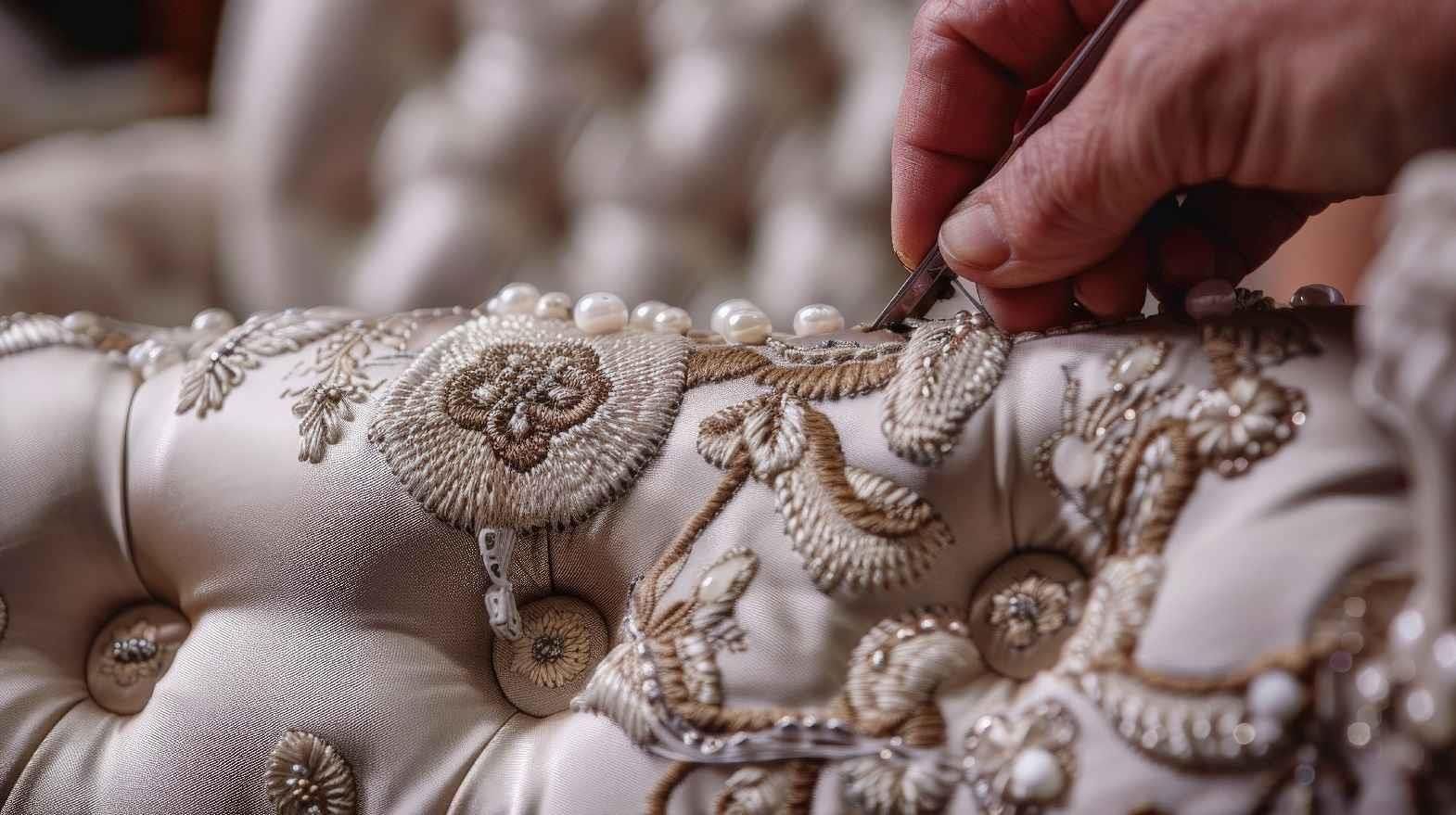Couture, a term synonymous with high-quality, bespoke fashion, has a rich history and undeniable relevance in today’s world. Beyond its opulent allure, couture holds the potential to save the environment and sustain the livelihoods of artisans. Couture can also contribute to upholding cultural heritage, providing jobs, and fostering a deeper appreciation for the craftsmanship that fast fashion often overlooks. For India, a country with a vibrant tapestry of traditional crafts, couture offers a pathway to preserving the rich cultural heritage and supporting artisan communities.
The Origins of Couture
The concept of couture began with Charles Frederick Worth around 1858 AD. From then on, couturiers emerged each season, crafting collections that set trends globally. The consumption of pure couture has traditionally been limited to the elite, with legendary couturiers like Dior, Balenciaga, Chanel, Schiaparelli, Mainbocher, Givenchy, Jacques Fath, Elie Saab, Giambattista Valli, Rahul Mishra, Stéphane Rolland, and Valentino leading the charge.
The Rise of Ready-to-Wear
With time, ready-to-wear (RTW) fashion also emerged. Yves Saint Laurent was among the first to open an RTW boutique in France, making high fashion more accessible. Initially, RTW was looked down upon, but it gained popularity due to its accessibility. Iconic pieces like Mary Quant’s micro-mini in the 1960s made RTW cool and relevant. The fashion cycle evolved into a progression from Couture to RTW to High Fashion to Fast Fashion.
The Essence of Couture
Haute couture, translating to high-quality needlework, involves meticulous craftsmanship. Couture garments are hand-crafted, with major seams finished by hand, and made-to-measure for the wearer. The process includes toile and final fittings, unlike RTW, which is based on universal size standards. Trends originate in couture, trickle down to RTW, and eventually become mass-produced in fast fashion, often losing their original essence.
The Craftsmanship Behind Couture
Couture garments are elaborately made and embellished. A typical couture house or atelier has sections for dressmaking, tailored garments, and embellishments or embroideries. Much of the embroidery work for couture is done by specialised houses like Lesage. Techniques such as fabric painting, printing, and dyeing add to the embellishment process. These time-consuming techniques require skilled artisans.
Few Well-Known Indian Couturiers
Rahul Mishra, an Indian couturier, exemplifies how couture can sustain traditional craftsmanship while creating stunning modern designs. His collections often feature intricate hand embroidery that takes thousands of hours to complete. Mishra’s work celebrates Indian artisans and techniques, such as chikankari, banarasi weaving, and traditional embroidery, presenting them on global platforms like Paris Haute Couture Week. His designs not only preserve these ancient crafts but also provide employment to numerous artisans across India, demonstrating the positive impact couture can have on local communities.
Likewise, Ritu Kumar, another stalwart of Indian fashion, has consistently championed traditional Indian crafts. Her 2004 bridal collection featured beautiful looks that were first block-printed with bagh prints and then embroidered with zardozi. This intricate process is very time-consuming and requires skilled artisans to work on one particular design for hours. This example underscores the dedication to preserving traditional techniques through couture.
Another designer known for his avant-garde approach to Indian couture is Gaurav Gupta, who blends traditional craftsmanship with futuristic designs. His work often features intricate hand embroidery and innovative silhouettes that push the boundaries of conventional fashion. By incorporating traditional Indian techniques in his couture collections, Gupta not only keeps these skills alive but also presents them in a contemporary context, appealing to a global audience.
Together, these designers illustrate the profound connection between couture and the preservation of India’s rich cultural heritage. Their work highlights how couture can sustain traditional craftsmanship while adapting to modern aesthetics, providing a sustainable and culturally enriched path forward for the fashion industry.
Environmental and Cultural Impact
Couture involves fewer chemicals and more skilled labour, making it more environmentally friendly. It also sustains artisans, whereas fast fashion diminishes the cultural value of garments, leading to a disposable culture. Couture’s meticulous creation process keeps many artisans employed and preserves traditional techniques that are at risk of being lost.
The Future of Couture
Despite the challenges, recent couture seasons show a silver lining, indicating that couture can still influence fashion trends. To achieve this, the promotion of slow fashion is essential. Embracing and showcasing cultural prints and patterns using traditional methods is necessary. India, with its rich diversity and traditional crafts in printing, painting, and embroidery, has the opportunity to lead this movement. By returning to its roots and enhancing them with technology, the country can create authentic, sustainable fashion that the world will appreciate.
Conclusion
In an era dominated by fast fashion and social media, couture stands as a beacon of sustainability, craftsmanship, and cultural preservation. While fast fashion may mimic the appearance of couture, it lacks the depth and spirit of true craftsmanship. Indian designers like Rahul Mishra, Ritu Kumar, and Gaurav Gupta exemplify how couture can be a powerful tool in preserving traditional crafts and providing employment to skilled artisans. The work of these Indian designers underscores the importance of maintaining cultural heritage while innovating within the fashion industry. By embracing couture, the environment can be protected, artisans can be supported, and the passion for genuine fashion can be reignited. This approach not only ensures the survival of age-old techniques but also promotes a more sustainable and ethically conscious fashion industry.
Couture, with its meticulous craftsmanship and cultural significance, is not just a luxury but a necessity for the future of fashion. It is through couture that unique stories can be told, heritage can be preserved, and a lasting impact on the global fashion landscape can be created.
The time is ripe for India to leverage its rich cultural legacy and craftsmanship, positioning itself as a global leader in sustainable and artisanal fashion. By promoting traditional crafts through couture, the country can offer the world a glimpse of the unparalleled beauty and skill that define Indian fashion. It is important to celebrate and support artisans, protect the environment, and embrace the true essence of couture.








Comments